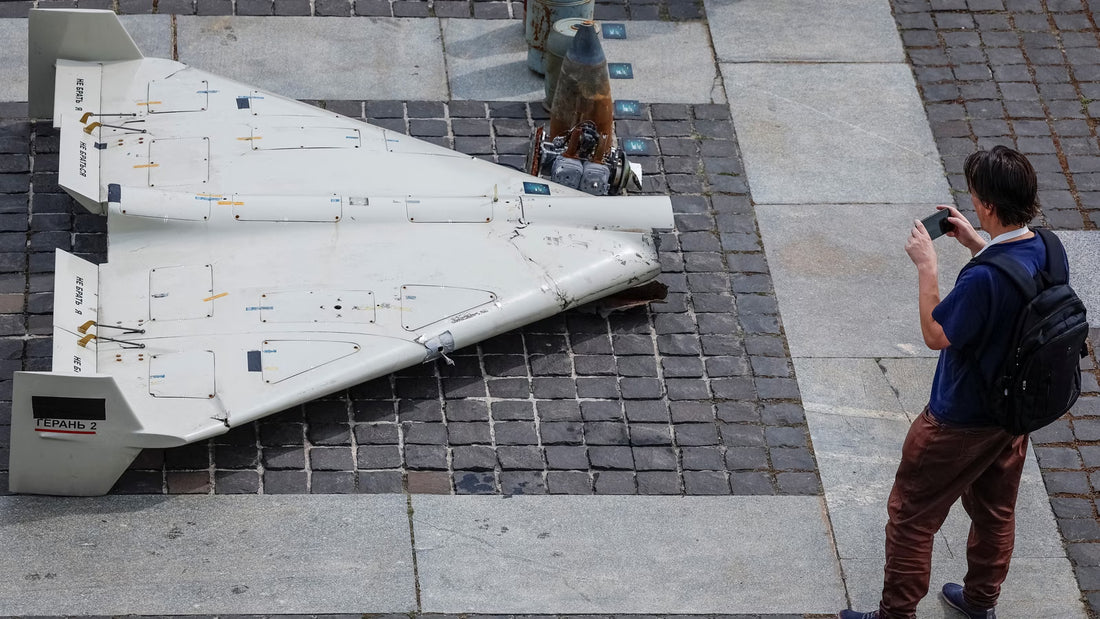Ukraine Raises Concerns Over Indian-Made Components in Russian-Used Drones

Ukraine has officially expressed concerns to both India and the European Union after identifying electronic components, made or assembled in India, in Iranian-designed Shahed 136 drones used by Russian forces in the conflict in Ukraine. Sources familiar with the situation indicated that Ukrainian authorities have sent at least two diplomatic notes to India's Ministry of External Affairs since the previous year, outlining the specific parts discovered and their purposes.
Ukrainian investigations revealed that the Shahed drone’s voltage regulator unit contained a Vishay Intertechnology “bridge rectifier E300359” assembled in India. Additionally, a PLL-based AU5426A chip from Aura Semiconductor, based in Bengaluru, was found integrated into the drone's antenna, making it resistant to jamming and aiding in satellite navigation. Both companies assert their adherence to all relevant export regulations, hinting that the components might have been rerouted through unauthorized third parties. Aura Semiconductor conveyed their concern over these findings, emphasizing that the parts are "plug-and-play," rendering them hard to track once sold.
Randhir Jaiswal, spokesperson for the Ministry of External Affairs, stated that India’s export of dual-use items is governed by a stringent domestic legal and regulatory framework, alongside international non-proliferation commitments, and is conducted with thorough due diligence to ensure compliance. Nonetheless, security agencies have since engaged with electronics manufacturers in Delhi, Bengaluru, and Mumbai to highlight the risks of diversion, especially to sanctioned regions.
Officials highlighted that such components are frequently exported legally to legitimate buyers in West Asia, before potentially being redirected to Iran or Russia. Trade specialists, including Ajay Srivastava, founder of the Global Trade Research Initiative, warned that although India firmly bans the export of dual-use items to sanctioned countries, tracking the ultimate use of these goods becomes nearly unfeasible once they are sent to legitimate third countries.
The Shahed 136, known for being a cost-effective unmanned combat aerial vehicle, has been heavily utilized by Russia since 2022, with more than 6,100 launches reported by Ukraine’s air force in July alone. Ukrainian defense intelligence has also identified components from American and Chinese companies within Russian weaponry, highlighting the global difficulty in ensuring export compliance within an interconnected supply chain.



















